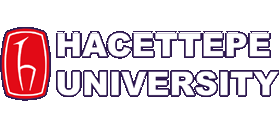| Obligation |
: |
Elective |
| Prerequisite courses |
: |
ELE345 |
| Concurrent courses |
: |
ELE440 |
| Delivery modes |
: |
Face-to-Face |
| Learning and teaching strategies |
: |
Lecture, Question and Answer, Problem Solving, Other: This course must be taken together with ELE440 ANTENNAS and PROPAGATION LABORATORY. |
| Course objective |
: |
It is aimed to give the following topics to the students; Fundametals of radiation theory, Antenna parameters, Radiation from wire antennas (current elements) Radiation from Aperture antennas and equivalence theorem, Antenna arrays, Receiving antennas, reciprocity theorem, noise, radar range equation, Propagation mechanisms of electromagnetic waves from ELF band to EHF band, Parameters of signal propagation to form a solid foundation in radiation and propagation of electromagnetic waves, so that the students can apply the principles of radiation and propagation to the problems which they may encounter within their studies/thesis/projects. |
| Learning outcomes |
: |
Form the radiation integral for given antenna geometry, boundary conditions, and frequency range, Obtain the radiated electromagnetic wave in Fraunhofer region, Conservation theorems of electromagnetic wave theory to obtain radiated electromagnetic field from various antenna structures, Apply Symmetry and Duality, Uniqueness, Reciprocity, Equivalence and Power Understand the parameters of wave propagation and identify the constraints due to environment, geometry, frequency, polarization, and medium of propagation, Have the solid foundations to solve real life problems in electromagnetic wave radiation from various types of antennas and propagation in a source-free medium. |
| Course content |
: |
Fundamentals of radiation theory, Antenna parameters, Radiation from elementary dipoles and loops, Radiation integrals for current (wire) antennas, Antenna arrays, Radiation from apertures and equivalence theorem, Receiving antennas and noise, Radar range equation and Friis transmission equation, Fundamentals of electromagnetic wave propagation, and introduction of constraints in terms of frequency, polarization, environmental conditions, geometry such as ground reflection, refraction, ducting, multipath, diffraction, interference, atmospheric attenuation in various frequency bands used in communication and radar systems. |
| References |
: |
1) Collin, R.E., Antennas and Radiowave Propagation, McGraw Hill, 1988.; 2) Balanis, C.A., Antenna Theory, John Wiley and Sons, New York, 2005.; 3) Kraus, J.D., Antennas, McGraw Hill, 1988.; 4) Jordan, E.C. and K.G. Balmain, Electromagnetic Waves and Radiating Systems, Prentice Hall, 1968. |
Course Outline Weekly
| Weeks |
Topics |
| 1 |
Fundamentals of radiation theory and introduction to radiating systems |
| 2 |
Radiation Mechanism, Radiation Integrals and Antenna parameters |
| 3 |
Antenna parameters cont., Radiation from a short current filament, Radiation from a small current loop |
| 4 |
Radiation from an arbitrary current distribution, Field regions |
| 5 |
Midterm Exam |
| 6 |
Antenna arrays, Array Factor |
| 7 |
Two dimensional / planar arrays, Endfire and Broadside arrays |
| 8 |
Introduction to antenna pattern synthesis |
| 9 |
Aperture antennas, Microstrip antennas |
| 10 |
Receiving Antennas, Transmission and reception equivalent circuits, |
| 11 |
Midterm Exam |
| 12 |
Friis Transmission Equation, Radar Range Equation, Fundamentals of propagation, parameters of propagation |
| 13 |
Atmospheric Layers, Index of refraction and effective earth model, Propagation with Frequency Factor, Pattern Losses |
| 14 |
Atmospheric Losses, Ground Reflection, Multipath, Diffraction, Interference, System Design Examples for communication and radar |
| 15 |
Preparation for Final exam |
| 16 |
Final exam |
Matrix Of The Course Learning Outcomes Versus Program Outcomes
| Key learning outcomes |
Contribution level |
| 1 |
2 |
3 |
4 |
5 |
| 1. |
Possesses the theoretical and practical knowledge required in Electrical and Electronics Engineering discipline. | | | | | |
| 2. |
Utilizes his/her theoretical and practical knowledge in the fields of mathematics, science and electrical and electronics engineering towards finding engineering solutions. | | | | | |
| 3. |
Determines and defines a problem in electrical and electronics engineering, then models and solves it by applying the appropriate analytical or numerical methods. | | | | | |
| 4. |
Designs a system under realistic constraints using modern methods and tools. | | | | | |
| 5. |
Designs and performs an experiment, analyzes and interprets the results. | | | | | |
| 6. |
Possesses the necessary qualifications to carry out interdisciplinary work either individually or as a team member. | | | | | |
| 7. |
Accesses information, performs literature search, uses databases and other knowledge sources, follows developments in science and technology. | | | | | |
| 8. |
Performs project planning and time management, plans his/her career development. | | | | | |
| 9. |
Possesses an advanced level of expertise in computer hardware and software, is proficient in using information and communication technologies. | | | | | |
| 10. |
Is competent in oral or written communication; has advanced command of English. | | | | | |
| 11. |
Has an awareness of his/her professional, ethical and social responsibilities. | | | | | |
| 12. |
Has an awareness of the universal impacts and social consequences of engineering solutions and applications; is well-informed about modern-day problems. | | | | | |
| 13. |
Is innovative and inquisitive; has a high level of professional self-esteem. | | | | | |
